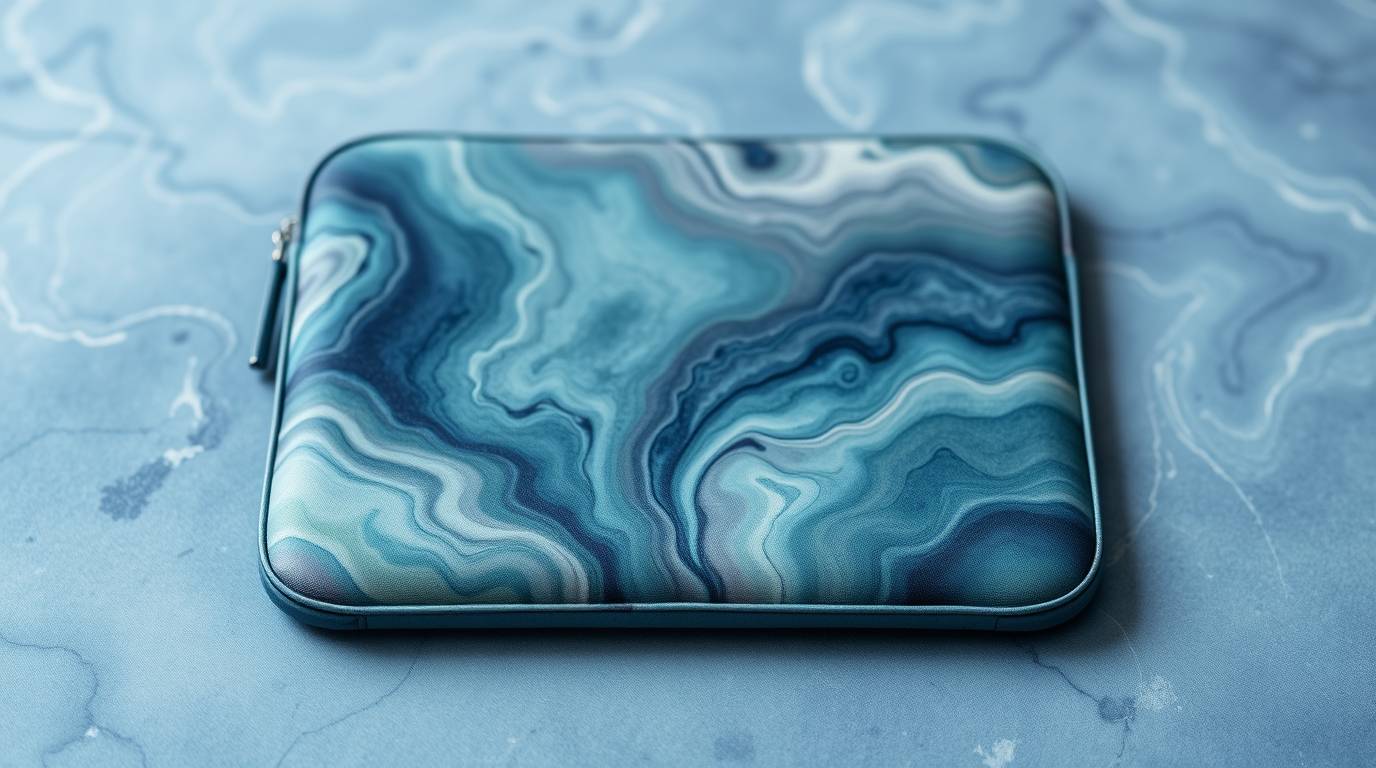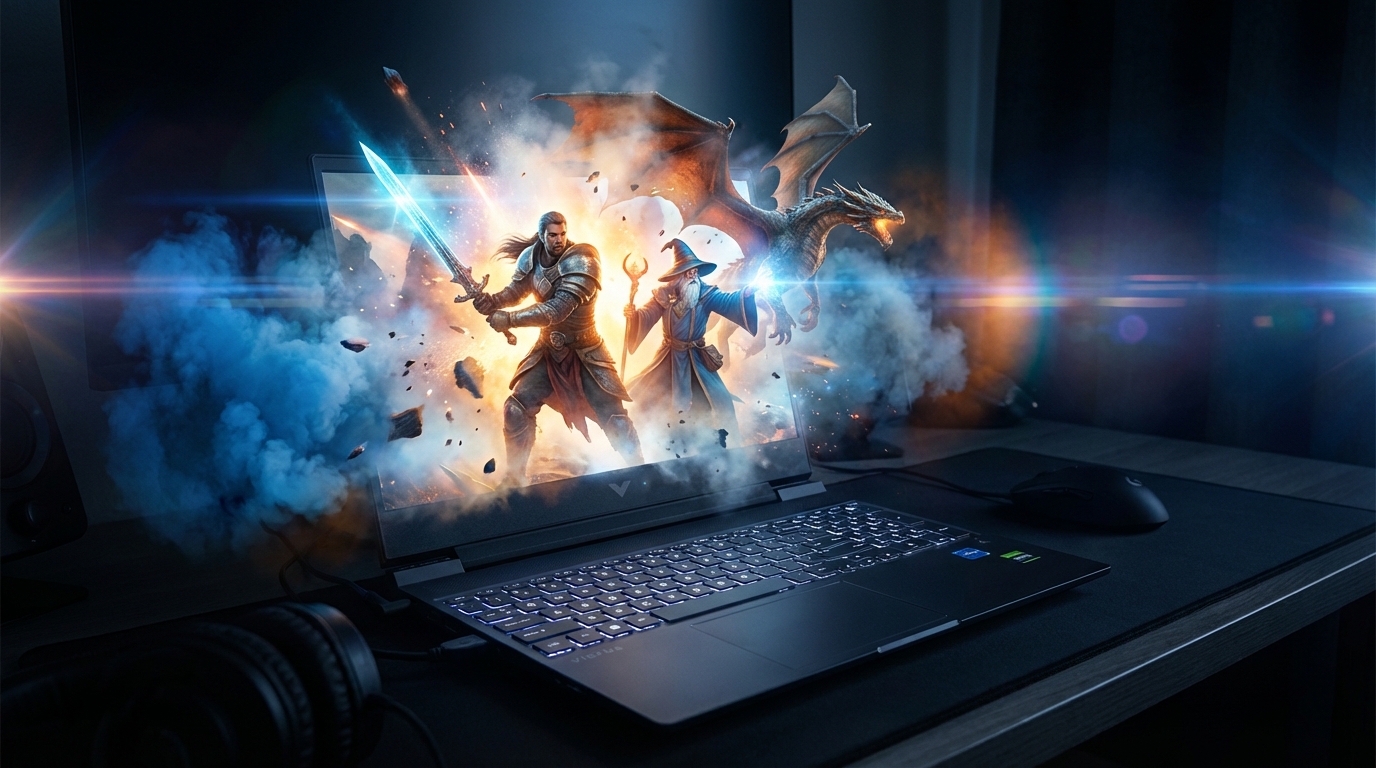Everything About Laptop RAM
Ultimate Guide to Laptop RAM: Everything You Need to Know
Table of Contents
Introduction
Memory is the unsung hero of your laptop's performance. While processors and graphics cards often steal the spotlight, your laptop's RAM (Random Access Memory) is quietly keeping everything running smoothly behind the scenes. Whether you're a casual browser, hardcore gamer, creative professional, or busy student, understanding RAM can help you make better decisions about your laptop purchase or upgrade.
In this comprehensive guide, we'll demystify laptop RAM with plain language and practical advice. By the end, you'll know exactly what RAM is, why it matters, how much you need, and how to upgrade it if necessary. Consider this your one-stop resource for all things laptop RAM! 💻
Let's dive in with a handy comparison table to set the stage:
| RAM Capacity | Best For | Typical Use Cases | Recommendation |
| 4GB | Basic tasks | Web browsing, document editing | Not recommended for new purchases |
| 8GB | Everyday use | Multitasking, light editing | Minimum for budget laptops |
| 16GB | Power users | Gaming, content creation | Standard for most users |
| 32GB+ | Professionals | Video editing, 3D rendering | Future-proofing, specialized work |
🧠 What is Laptop RAM?
RAM, which stands for Random Access Memory, is your laptop's short-term memory. Unlike your hard drive or SSD (the long-term memory), RAM is volatile, meaning it only holds data temporarily while your computer is powered on.
Think of RAM as your laptop's workspace. When you open a program or file, it gets loaded from storage (your hard drive/SSD) into RAM for quick access and manipulation. The larger your RAM capacity, the more programs and data your laptop can actively work with simultaneously.
Physically, laptop RAM comes in small rectangular modules called SODIMMs (Small Outline Dual In-line Memory Modules) that slot into dedicated spaces on your laptop's motherboard. These modules are smaller than desktop RAM to fit into the compact space of a laptop.
🚀 What is Laptop RAM Used For?
RAM serves several crucial functions in your laptop's operation:
- Running Programs: Every application you open uses RAM. Your operating system, web browser, games, and productivity software all need RAM to function.
- Multitasking: RAM allows you to run multiple programs simultaneously. The more RAM you have, the more applications you can have open without slowdowns.
- Caching: Your system keeps frequently accessed data in RAM for quicker retrieval, improving overall performance.
- Graphics Processing: For laptops without dedicated graphics cards, RAM is shared with the integrated graphics processor to handle visual tasks.
- System Responsiveness: Adequate RAM keeps your laptop feeling snappy and responsive during everyday use.
When you run out of physical RAM, your laptop starts using "virtual memory" by writing data to your storage drive, which is significantly slower. This process, called "paging" or "swapping," can cause noticeable slowdowns and that frustrating laptop lag we've all experienced.
📊 RAM Capacity: How Much Do You Need?
4GB vs 8GB vs 16GB vs 32GB+
💻 4GB RAM: 4GB is the bare minimum for running a modern operating system. You'll be able to:
- > Run basic applications like a web browser with a few tabs
- > Use basic productivity software like word processors
- > Perform simple tasks one at a time
However, multitasking will be limited, and you'll likely experience slowdowns. I wouldn't recommend purchasing a new laptop with only 4GB of RAM unless you're on an extremely tight budget and have very basic needs.
✅ 8GB RAM: This is now considered the practical minimum for everyday use:
- > Comfortable web browsing with multiple tabs
- > Running several basic applications simultaneously
- > Light photo editing
- > Casual gaming with less demanding titles
For budget-conscious buyers who primarily use their laptops for web browsing, Microsoft Office, streaming videos, and other basic tasks, 8GB is adequate but not luxurious.
⚡ 16GB RAM: This is the sweet spot for most users is:
- > Heavy multitasking with dozens of browser tabs
- > Running resource-intensive applications
- > Modern gaming at reasonable settings
- > Content creation including photo editing and light video work
If you're buying a new laptop and can afford it, 16GB provides an excellent balance of performance and value for most users.
⭐ 32GB+ RAM: This amount is for power users and professionals:
- > Professional video editing and rendering
- > 3D modeling and animation
- > Virtual machine hosting
- > Scientific computing and data analysis
- > High-end gaming with streaming simultaneously
Unless you're doing specialized work or want to future-proof your laptop for many years, 32GB might be overkill for the average user.
RAM Needs for Different Users
🎮 For Gaming:
Modern games have varying RAM requirements:
- 8GB: Minimum for casual gaming and older titles
- 16GB: Recommended for most modern games
- 32GB: Only beneficial for the most demanding titles or if you're streaming while gaming
Remember that gaming performance also heavily depends on your GPU and CPU, not just RAM capacity.
🎬 For Video Editing:
- 16GB: Entry-level for 1080p projects with basic effects
- 32GB: Recommended for 4K editing and more complex projects
- 64GB+: Professional-level for 8K footage or complex compositing
Video editing applications like Adobe Premiere Pro and DaVinci Resolve are notorious RAM consumers, especially when working with high-resolution footage.
🎓 For Students:
Your RAM needs depend on your field of study:
- 8GB: Sufficient for basic research, writing papers, and online learning
- 16GB: Recommended for most students, especially those using multiple applications
- 32GB: Necessary for specialized fields like engineering, architecture, or media production
If you're doing programming, data analysis, or design work as a student, prioritize having at least 16GB of RAM.
🔄 RAM Types: DDR4 vs DDR5
RAM technology continues to evolve, with two main types dominating the laptop market:
DDR4 RAM:
- Introduced in 2014
- Speeds typically range from 2133MHz to 3200MHz
- More affordable and widely available
- Found in most laptops from 2015-2022
DDR5 RAM:
- Introduced in late 2021
- Speeds starting at 4800MHz and going much higher
- Better power efficiency (1.1V vs 1.2V for DDR4)
- Higher bandwidth and capacity potential
- Now common in premium laptops from 2023 onward
What's Best?
DDR5 is technically superior with higher bandwidth, better power efficiency, and more potential for future growth. However, DDR4 still offers excellent performance for most users and is more affordable.
The catch: You can't choose freely between them. Your laptop's motherboard is designed for either DDR4 or DDR5, not both. Newer laptops (especially high-end models from 2023 onward) typically use DDR5, while slightly older models use DDR4.
When upgrading, you must match your laptop's existing RAM type. A laptop designed for DDR4 cannot use DDR5 RAM, and vice versa.
✅ How to Check Your Laptop's Current RAM
Before considering an upgrade, you need to know what RAM your laptop currently has. Here are several methods to check:
How to Check Laptop RAM on Windows:
Task Manager Method:
- 1. Right-click on the taskbar and select "Task Manager"
- 2. Click on the "Performance" tab
- 3. Select "Memory" from the left sidebar
- 4. Here you'll see your total installed RAM, speed, and how many slots are used
System Information Method:
- 1. Press Win+R to open the Run dialog
- 2. Type "msinfo32" and press Enter
- 3. Under "System Summary," find "Installed Physical Memory (RAM)"
Settings App Method:
- 1. Go to Start > Settings > System > About
- 2. Look under "Device specifications" for "Installed RAM"
How to Check Laptop RAM on mac:
Mac Method:
- 1. Click the Apple logo in the top-left corner
- 2. Select "About This Mac"
- 3. Look for "Memory" in the overview tab
System Report Method:
- 1. Click the Apple logo > About This Mac
- 2. Click "System Report"
- 3. Select "Memory" from the sidebar for detailed information
How to Check Laptop RAM on Linux:
Terminal Method:
- 1. Open Terminal
- 2. Type
free -hand press Enter to see RAM capacity - 3. For more details, type
sudo dmidecode --type memory
For Detailed Information (All platforms):
For comprehensive information about your RAM, including type (DDR4/DDR5), speed, and available slots, I recommend using specialized tools:
- CPU-Z (Windows)
- HWiNFO (Windows)
- Memtest86+ (Bootable, all platforms)
🔧 Upgrading Your Laptop's RAM
Can I Upgrade My Laptop RAM?
Not all laptops allow RAM upgrades. Here's how to determine if yours does:
Upgradeable Laptops Usually:
- ✅ Have removable bottom panels
- ✅ Contain RAM modules not soldered to the motherboard
- ✅ Feature accessible RAM slots
- ✅ Are business, gaming, or high-end models
Non-Upgradeable Laptops Usually:
- 🚫 Have RAM soldered directly to the motherboard
- 🚫 Are ultrabooks prioritizing thinness
- 🚫 Include most Apple MacBooks from 2016 onward
- 🚫 Feature many premium ultraportables
To determine if your specific laptop model allows RAM upgrades:
- 🔍 Check your laptop's manual or manufacturer's website
- 🔍 Look up your model on sites like iFixit or YouTube for teardown videos
- 🔍 Use Crucial's System Scanner or a similar tool to check compatibility
- 🔍 Contact your laptop manufacturer's support
Step-by-Step RAM Upgrade Guide
If your laptop supports RAM upgrades, here's how to do it:
What You'll Need:
- 💾 Compatible RAM module(s)
- 🪛 Phillips head screwdriver (typically #00 or #0)
- 🔧 Plastic pry tool (optional)
- 🔦 Clean, well-lit workspace
Step 1: Preparation
- Shut down your laptop completely (not sleep or hibernate)
- Unplug the power adapter and remove the battery if possible
- Hold the power button for 5 seconds to discharge residual electricity
- Ground yourself by touching a metal object or using an anti-static wrist strap
Step 2: Access the RAM Compartment
- Flip your laptop upside down
- Remove the screws securing the bottom panel or dedicated RAM compartment
- Some laptops have a small panel just for RAM access
- Others require removing the entire bottom panel
- Carefully pry open the panel using your fingers or a plastic tool
- Work slowly around the edges to avoid breaking clips
Step 3: Remove Existing RAM (if necessary)
- Locate the RAM modules (rectangular components held by clips)
- Gently spread the retention clips on both sides of the module
- The RAM will pop up at an angle
- Carefully slide the module out of its slot
Step 4: Install New RAM
- Align the notch on the new RAM module with the slot (it only fits one way)
- Insert the module at a 30-45 degree angle
- Press down firmly until the module clicks into place and the retention clips engage
- Verify the module sits flat and secure
Step 5: Reassemble and Test
- Replace the bottom panel or RAM compartment cover
- Secure all screws (but don't overtighten)
- Reconnect the battery and power adapter
- Power on your laptop
- Verify the new RAM is recognized (using methods from the previous section)
Troubleshooting Common Installation Issues:
- If your laptop doesn't boot, the RAM may not be fully seated. Try reinstalling it.
- If the new RAM isn't recognized, make sure it's compatible with your laptop.
- If you get beep codes or error messages, consult your laptop's manual.
💰 Buying Laptop RAM
Where to Buy
Online Retailers:
- Amazon: Wide selection, competitive prices, fast shipping
- Newegg: Specializes in computer components, frequent sales
- Best Buy: Good for immediate needs with in-store pickup
- B&H Photo Video: Reliable retailer with excellent customer service
- Crucial.com: Manufacturer direct with compatibility tools
Physical Stores:
- Best Buy
- Micro Center (limited locations but excellent selection)
- Local computer shops (often provide installation services)
Determining Compatible RAM
Buying the correct RAM is critical. Incompatible RAM won't work and could potentially damage your system. Here's how to determine what RAM your laptop needs:
Method 1: Use Manufacturer Tools
- Crucial System Scanner: Automatically detects compatible upgrades
- Kingston Memory Finder: Searchable database by laptop model
- Corsair Memory Finder: Similar system-specific recommendations
Method 2: Check Your Laptop Specifications
You need to know:
- RAM type: DDR4 or DDR5
- Speed: Measured in MHz (e.g., 3200MHz)
- Form factor: Almost always SO-DIMM for laptops
- Maximum supported capacity: Per slot and total
- Number of slots: Available and currently occupied
Method 3: Contact Manufacturer Support
Provide your exact model number and ask for compatible RAM specifications.
Best RAM Brands 💻
When it comes to laptop RAM, reliability is paramount. Here are some reputable brands with track records of quality products:
Top-Tier Manufacturers:
- Crucial (Micron): Excellent reliability and compatibility
- Kingston/HyperX: Wide range of options for various needs
- Corsair: Popular among gamers with good performance
- G.Skill: High-performance options with lifetime warranties
- Samsung: OEM supplier for many laptops, very reliable
Budget-Friendly Options:
- PNY: Good value while maintaining decent quality
- Patriot: Affordable with reasonable performance
- Team Group: Lesser-known but generally reliable
When choosing between brands, consider:
- Warranty length: Longer is better (lifetime warranties are available)
- Customer support: Crucial and Kingston are known for excellent support
- Compatibility guarantees: Some brands offer refunds if RAM doesn't work with your system
- Performance needs: Gaming-oriented brands often offer higher speeds
Common RAM Questions
Why is Laptop RAM So Expensive? 💸
Laptop RAM (SODIMMs) typically costs more than desktop RAM for several reasons:
- Manufacturing complexity: The compact form factor requires more precise engineering
- Lower production volume: Desktop RAM sells in higher quantities, lowering costs
- Market dynamics: Fewer manufacturers compete in the laptop RAM space
- Supply chain fluctuations: Semiconductor shortages have impacted pricing since 2020
- Specialized features: Laptop RAM often includes power-saving technologies
To get the best deals:
- 🎯 Watch for sales during major shopping events (like Black Friday etc)
- 🎯 Consider slightly lower speeds to save money (the performance difference is often minimal)
- 🎯 Buy RAM kits instead of individual modules when possible
- 🎯 Check if your laptop really needs "premium" RAM or if standard modules will work fine
Can Laptop RAM Be Used in Desktop?
Short answer: No, not directly.
Laptop RAM (SO-DIMM) and desktop RAM (DIMM) have different physical sizes and pinouts. Laptop RAM is smaller and won't physically fit in desktop motherboards.
However, there are specialized adapters that allow SO-DIMMs to be used in DIMM slots. These adapters are rarely used due to:
- Potential compatibility issues
- Performance limitations
- Cost (adapters + laptop RAM often costs more than desktop RAM)
- Reliability concerns
If you're upgrading both a laptop and desktop, it's better to buy the appropriate type for each rather than trying to use laptop RAM in a desktop.
Why Is My Laptop Using So Much RAM?⚡
If your laptop seems to be using an excessive amount of RAM, several factors could be at play:
Common Causes of High RAM Usage:
- Too many open applications: Each program consumes RAM, even when minimized
- Browser tab overload: Modern web browsers use significant RAM per tab
- Resource-hungry applications: Programs like Chrome, Adobe Premiere, or games
- Background processes: Services running invisibly can consume RAM
- Memory leaks: Software bugs that cause programs to continuously use more RAM
- Malware or viruses: Unwanted programs consuming resources
How to Identify RAM Hogs:
- Open Task Manager (Ctrl+Shift+Esc on Windows)
- Sort processes by "Memory" usage
- Identify which applications are using the most RAM
How to Reduce RAM Usage:
- Close unnecessary applications and browser tabs
- Disable startup programs:
- Windows: Task Manager > Startup tab
- Mac: System Preferences > Users & Groups > Login Items
- Update your software and OS
- Scan for malware
- Restart your laptop regularly
- Use lightweight alternatives: Firefox instead of Chrome, or Photoshop Elements instead of full Photoshop
Remember that unused RAM is wasted RAM. Operating systems are designed to use available memory for caching and optimization. If your RAM usage is high but your system isn't slow, it may actually be working efficiently.
🏁 Conclusion
Understanding laptop RAM is key to making informed decisions about your computing needs. Whether you're buying a new laptop, upgrading an existing one, or troubleshooting performance issues, RAM plays a crucial role in your overall experience.
Key Takeaways:
- ⭐ RAM is your laptop's short-term memory, essential for multitasking and performance
- ⭐ For most users, 16GB is the sweet spot between price and performance
- ⭐ Specific use cases like gaming or video editing may require more RAM
- ⭐ Not all laptops allow RAM upgrades; check compatibility before purchasing
- ⭐ DDR5 is newer and faster, but DDR4 remains perfectly capable for most users
- ⭐ RAM is just one component of laptop performance; consider CPU, storage, and GPU too
Remember that while adding more RAM can often improve performance, it's not a cure-all for every slowdown. If your laptop is struggling, consider a holistic approach to upgrading or optimizing your system.
I hope this guide has demystified laptop RAM and empowered you to make the right decisions for your specific needs and budget. Happy computing! 💻✨



